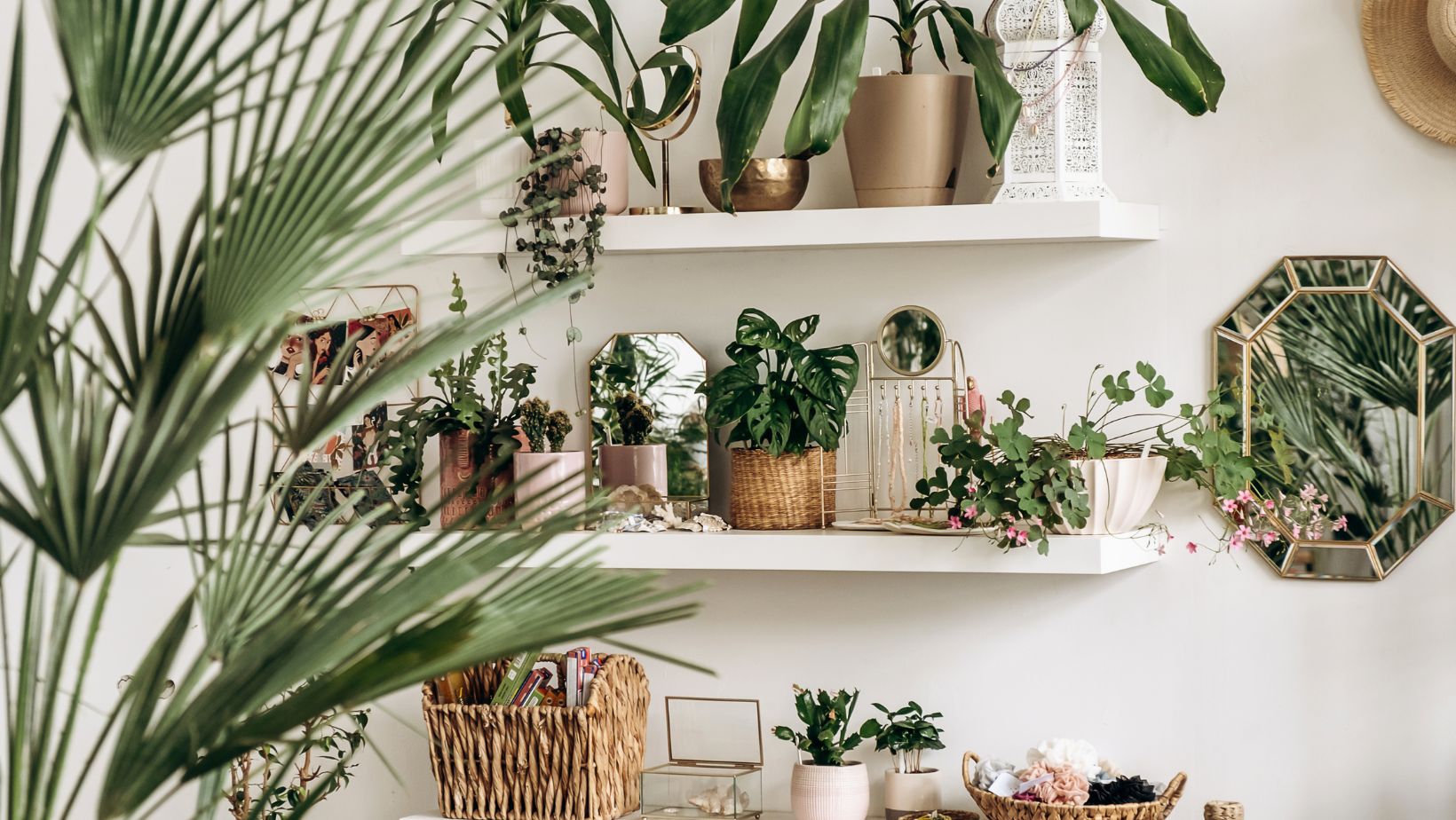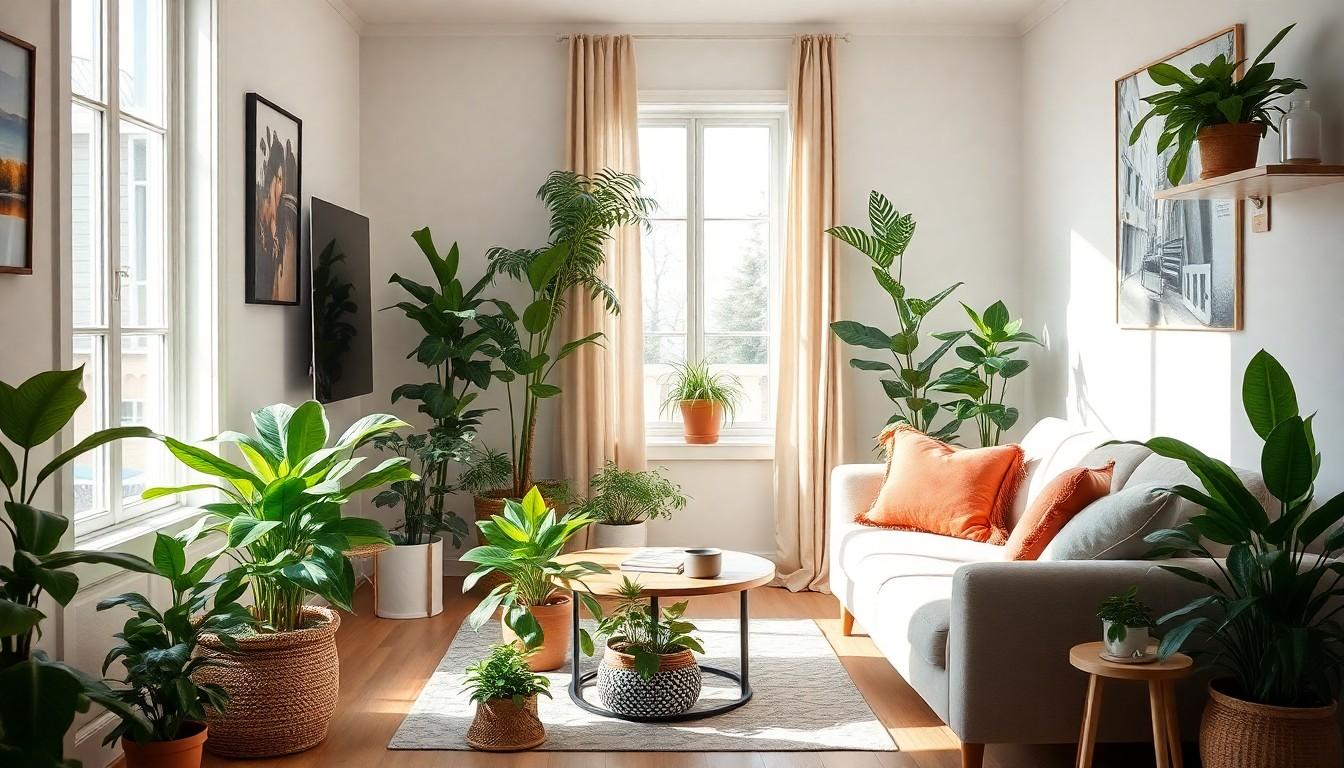The Best Fluffy Pancakes recipe you will fall in love with. Full of tips and tricks to help you make the best pancakes.

Indoor Plants for Beginners: Discover Easy Care Tips & Stunning Low-Maintenance Choices
Indoor plants are like the perfect roommates—they brighten up any space, improve air quality, and don’t hog the remote. For beginners, diving into the world of houseplants can feel a bit like navigating a jungle without a map. But fear not! With the right guidance, anyone can transform their home into a lush oasis.
Choosing the right plants is key to success. Some are as low-maintenance as a pet rock, while others might require a bit more TLC. Whether it’s a snake plant that thrives on neglect or a cheerful pothos that just wants to hang out, there’s a green companion for every lifestyle. So grab your watering can, and let’s explore the best indoor plants that’ll make even the most seasoned plant parent a tad jealous.
Overview of Indoor Plants for Beginners
Indoor plants offer numerous benefits, making them perfect for beginners. They enhance living spaces and improve air quality. Some species thrive in low-light conditions, while others flourish under bright light. Selecting low-maintenance plants simplifies the initial experience. Popular choices include pothos, snake plants, and ZZ plants. These varieties tolerate neglect, making them excellent for those new to gardening.
Creating a vibrant indoor garden starts with knowledge. Understanding each plant’s light and water requirements proves essential. Overwatering remains a common mistake among beginners. Soil type also plays a significant role in plant health. Well-draining potting mixes prevent root rot, a frequent issue in indoor gardening.
Additionally, indoor plants foster a sense of well-being. Studies show that greenery indoors reduces stress and boosts mood. Having plants within sight can increase productivity and concentration. Choosing plants based on lifestyle and home environment makes the experience more enjoyable.
Some beginners may prefer plants with seasonal blooms. African violets and peace lilies provide colorful displays while being relatively easy to care for. Others might opt for non-flowering foliage plants, which offer year-round greenery.
Engaging with indoor plants doesn’t require extensive knowledge. Basic research and simple care routines substantially enhance success rates. Local gardening centers offer valuable resources on plant care, providing advice tailored to specific varieties and environments. With the right approach, anyone can cultivate a thriving indoor garden.
Benefits of Having Indoor Plants

Indoor plants offer numerous advantages that enhance both physical and mental well-being. From improving air quality to enhancing aesthetics, their presence transforms spaces and lives.
Improved Air Quality
Indoor plants purify the air, effectively absorbing toxins like formaldehyde and benzene. NASA’s Clean Air Study identified several species, including spider plants and peace lilies, known to reduce indoor pollutants. They release oxygen during photosynthesis, increasing overall oxygen levels in homes. Additionally, increased humidity from plants benefits respiratory health, alleviating dryness in the air. As a result, healthier air contributes to reduced allergies and enhances overall comfort.
Enhanced Aesthetics
Plants enhance the aesthetics of living spaces, providing vibrant colors and textures. They serve as natural decor solutions, easily complementing various interior styles. Incorporating plants into a home creates a welcoming atmosphere, making spaces feel lively and inviting. Furthermore, greenery draws attention, softening harsh lines of furniture and architecture. The visual appeal of indoor plants also fosters a sense of connection to nature, improving overall mood and satisfaction within indoor environments.
Choosing the Right Indoor Plants
Selecting appropriate indoor plants enhances the success of your gardening experience. Recognizing plant characteristics simplifies the process for beginners.
Low-Maintenance Options
Low-maintenance plants provide excellent choices for novice gardeners. Pothos thrives in various light conditions, requiring minimal watering. Snake plants tolerate neglect and can survive in low-light settings. ZZ plants excel in dry environments and can go weeks without water. These hardy varieties make it easy to maintain a lush indoor garden.
High-Light vs. Low-Light Plants
Understanding light requirements ensures optimal growth for indoor plants. High-light plants, such as succulents and cacti, flourish in bright, indirect sunlight. They need consistent exposure to thrive. Low-light plants, like pothos and peace lilies, adapt well to dimmer spaces. Selecting the right plants based on light conditions leads to healthier growth and vibrant foliage.
Care Tips for Indoor Plants
Taking care of indoor plants requires attention to a few key areas to ensure they thrive. Understanding watering and soil needs forms the foundation of successful indoor gardening.
Watering Guidelines
Watering indoor plants involves maintaining the right balance, as too much or too little can harm them. Check the top inch of the soil; if it feels dry, it’s time to water. Ensure pots have drainage holes; this prevents water from stagnating. Plants that prefer to dry out between waterings include snake plants and ZZ plants. Observing the leaves can provide cues; yellowing often indicates overwatering while drooping suggests a need for moisture. Each plant type has specific needs, so researching each one’s preferences enhances care routines.
Fertilizing and Soil Requirements
Fertilizing indoor plants helps sustain growth and vibrancy. Choose a balanced fertilizer with equal parts nitrogen, phosphorus, and potassium for general use. Apply every 4 to 6 weeks during the growing season, which is typically spring and summer. Soil selection matters significantly for health; well-draining potting mixes are essential for preventing root rot. Look for mixes specifically designed for indoor plants. Every variety may require different textures; for instance, succulents thrive in sandy soil, while peace lilies prefer moisture-retaining mixes. Tailoring soil and fertilizer according to specific plant needs promotes thriving indoor gardens.
Common Indoor Plant Varieties for Beginners
Several indoor plant varieties suit beginners, each offering unique features and care requirements.
Snake Plant
Snake plants, also known as Sansevieria, thrive in a range of indoor conditions. This hardy plant tolerates low light and sporadic watering, making it an excellent choice for novices. Its striking, upright leaves add a modern touch to any space. Snake plants also purify air by removing toxins, enhancing indoor environments. Overwatering poses the biggest threat, so watering should occur only when the top inch of soil feels dry. Fertilizers aren’t necessary, but occasional feeding in the growing season promotes better growth.
Pothos
Pothos, or Epipremnum aureum, ranks as one of the most popular houseplants. This trailing vine adapts well to different lighting conditions, thriving in both low and bright light. Its heart-shaped leaves come in various colors, from vibrant green to variegated patterns. To care for pothos, water it when the soil feels dry to the touch, preventing root rot. Fertilizing every few months encourages lush growth, but the plant flourishes even with minimal nutrients. Pothos offers flexibility in decor, making it ideal for shelves and hanging baskets.
Peace Lily
Peace lilies, scientifically known as Spathiphyllum, enhance indoor spaces with their elegant blooms. They prefer indirect light, which protects their delicate flowers. Regularly watering keeps the soil moist but not soggy, ensuring optimal health. Peace lilies also act as air purifiers, making them beneficial for overall well-being. Yellowing leaves often indicate overwatering, so monitoring moisture is crucial. Fertilizing once or twice a year fosters growth, enhancing the plant’s beauty. Their unique ability to bloom in lower light adds further appeal to these versatile plants.
Conclusion
Starting an indoor garden can be an enjoyable and rewarding experience. With the right plants and care techniques, anyone can transform their living space into a lush oasis. Low-maintenance options like snake plants and pothos make it easy for beginners to succeed without feeling overwhelmed.
Understanding each plant’s specific needs is crucial for promoting healthy growth and avoiding common pitfalls like overwatering. By nurturing these green companions, individuals not only enhance their homes but also reap mental health benefits and improve air quality. Embracing the journey of indoor gardening opens the door to creativity and connection with nature, making it a fulfilling hobby for all.
